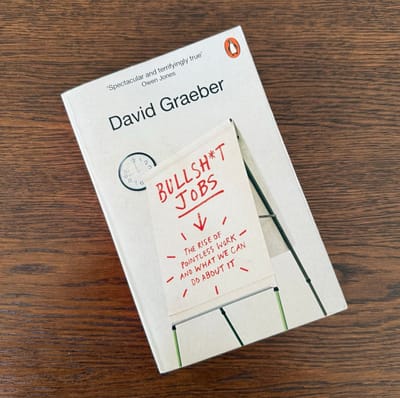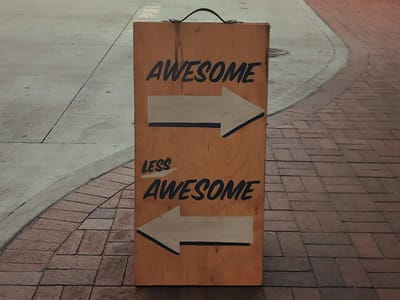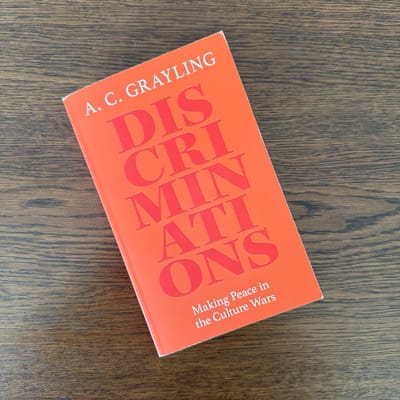Co-Active Coaching by Kimsey House et al

Co-Active Coaching is regarded as one of the foundational texts in coaching. It’s also a core text book for my Coaching course with the Coach Institute of Ireland.
I read the fourth edition of the Co-Active Coaching - available on Amazon here.
The book introduces the Co-Active coaching model, a collaborative and holistic approach that emphasises partnership between coach and client. It also provides both practical tools and philosophical insights to help coaches build impact with client-centred practices.
Overview
The Co-Active coaching model revolves around the idea that clients/coachees are naturally creative, resourceful, and whole. Rather than viewing clients as people who need to be fixed or given solutions, the Co-Active approach sees them as capable individuals who already possess the answers to their challenges. The role of the coach, therefore, is not to direct but to partner with the client in discovering and tapping into their inner resources.
This aligns with the model of coaching I have favoured in my career, so I found the framework the book gives easy to absorb.
The book is structured in three main sections. The first lays the groundwork by explaining the principles of the Co-Active model, the second goes into specific coaching skills and techniques, and the final section covers topics like deepening the coach-client relationship and creating a sustainable coaching practice.
Key Insights and Takeaways
1. The Balance of Being and Doing
One of the central themes in Co-Active Coaching is the balance between "being" and "doing." Traditional coaching often focuses on goal-setting and action steps, which is the "doing" side of coaching.
However, Co-Active coaching places equal importance on "being"—the emotional, psychological, and relational aspects of the client. This dual focus ensures that the coaching relationship is not only about achieving results but also about personal growth and self-awareness.
My Takeaway: Coaches should encourage clients to reflect on both actions and emotional states. This approach leads to a more sustainable and meaningful change, as clients not only reach their goals but also grow as individuals.
2. Clients Are Naturally Creative, Resourceful, and Whole
A core belief of the Co-Active model is that clients already have the answers they need. They don’t need to be ‘fixed’ by the coach; rather, the coach’s role is to facilitate the client's self-discovery. This mindset shifts the coaching dynamic from ‘instruction’ → ‘partnership’, where the coach and client work together to explore solutions.
My Takeaway: By seeing clients as capable and whole, coaches foster improved self-confidence and greater empowerment in their clients. This belief encourages a coaching style that is supportive, non-directive, and respectful of the client’s abilities.
3. Powerful Questions and Active Listening
One of the key skills described in the book is the art of asking powerful, open-ended questions that challenge the client to think more deeply and creatively. Coupled with this is the emphasis on active listening - the book outlines three levels of listening that ‘tune-in’ to the coachees words, emotions, and underlying messages.
These skills enable the coach to guide the client toward new insights without imposing their own ideas or solutions.
My Takeaway: The quality of a coaching conversation is determined by the coach’s ability to ask thought-provoking questions and listen attentively. These skills help clients gain clarity, explore new perspectives, and take ownership of their decisions.
4. The Importance of Accountability
While Co-Active coaching is not prescriptive, it does highlight the importance of accountability. Coaches help clients create clear commitments and follow through on their intentions. By holding clients accountable in a supportive manner, coaches help them maintain momentum and stay aligned with their values and goals.
My Takeaway: Accountability is a critical part of coaching. Coaches should work with clients to set realistic commitments and follow up on progress, ensuring that the client remains accountable for growth and development.
5. Coaching as a Partnership
In the Co-Active model, the relationship between coach and client is a partnership built on trust, respect, and mutual engagement. This partnership approach fosters a deep level of connection and safety, allowing clients to be vulnerable, take risks, and explore uncomfortable areas of their lives.
My Takeaway: Coaches should focus on creating a strong partnership with their clients, where both parties are equally engaged in the process. This relationship is foundational to the client’s willingness to explore new ideas and take action.
Practical Application
The book provides some practical tools and techniques for coaches to use. Each chapter includes exercises and sample conversations to illustrate how the concepts work in practice. For example, there are detailed instructions on how to conduct a “designed alliance,” where the coach and client agree on the terms and expectations of their working relationship. This exercise ensures that both parties are aligned on how they will collaborate throughout the coaching process.
Additionally, the authors present the Co-Active coaching skills framework, which includes:
- Listening Levels – different levels of listening that range from internal listening (focused on oneself) to global listening (taking in the whole person and environment).
- Powerful Questions – how to ask questions that stimulate insight and reflection.
- Intuition – trusting your instinct as a coach and using intuition to guide the conversation.
My Takeaway: There are enough examples, and good practical suggestions and tools that this can be a useful ‘toolbox’ to refer to when working through coaching situations. In addition, there is an online toolkit of forms/templates that are a useful starting point for a coaching practice.
Conclusion
Co-Active Coaching is an excellent read for coaches looking to build a collaborative, client-centred coaching practice. The model’s balance between action and reflection, fostering deep self-awareness, and creating a partnership with clients makes it an effective approach for long-term personal and professional development.
Some readers may prefer a more straightforward and direct approach to guidance about coaching, and as this book uses a more open-ended inquiry approach, it might feel a bit unstructured.
Overall, Co-Active Coaching offers a toolkit of techniques that can be used to create deeper, more meaningful coaching conversations. It can provide both the philosophical foundation and practical skills needed to excel in the art of coaching.
I’d recommend Co-Active Coaching to anyone that is building a coaching practice or wants to reinforce their coaching skills.







Member discussion